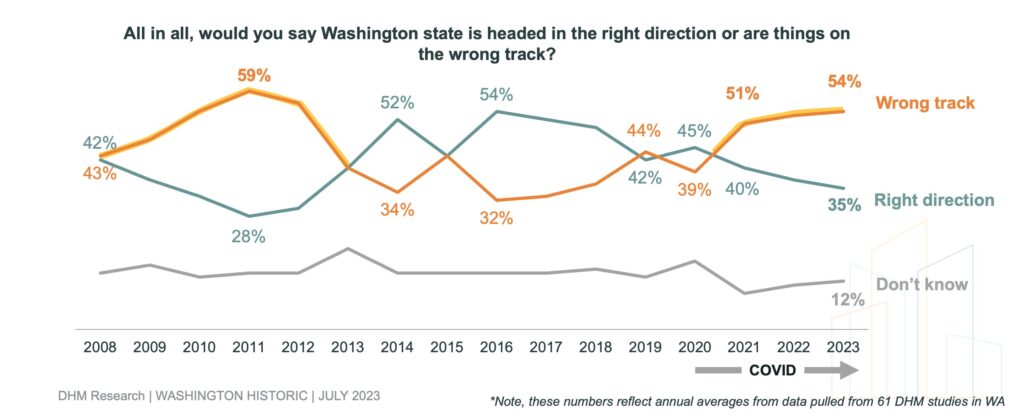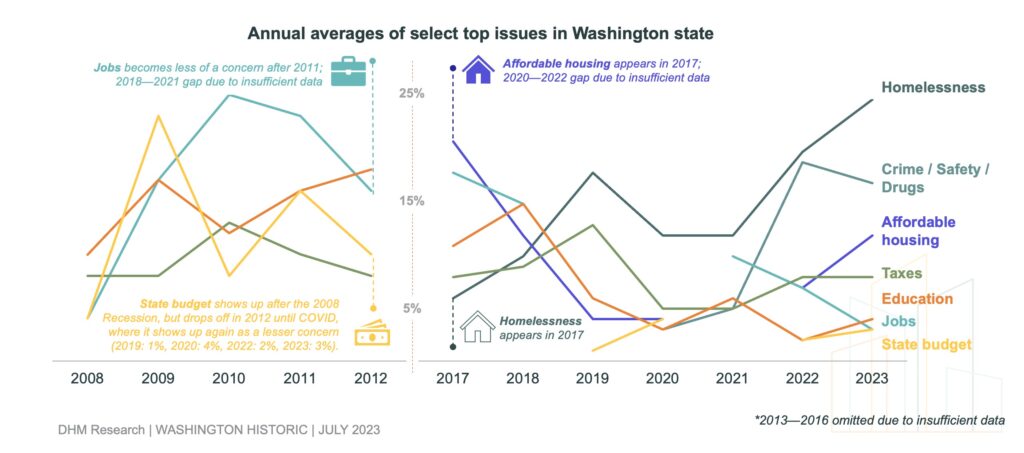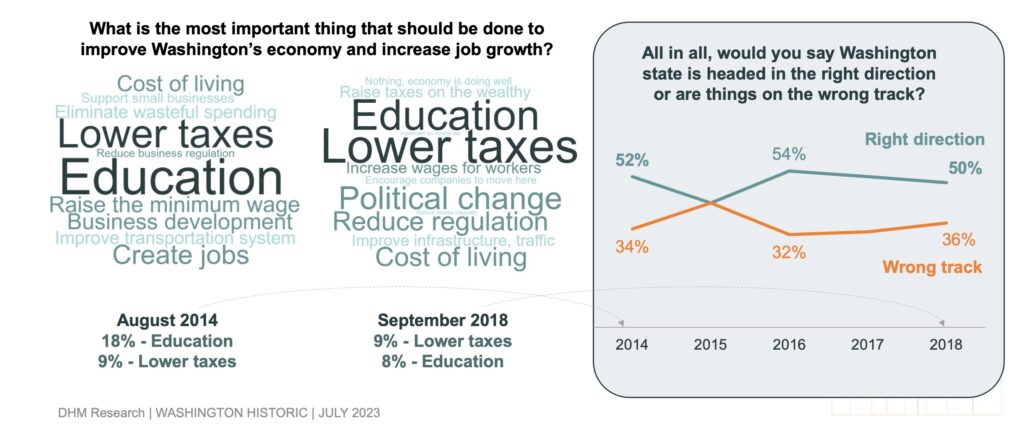DHM Research has conducted public opinion research in the Pacific Northwest for over 45 years. This past summer, DHM Research intern Jane Tang combed through, compiled, and analyzed data from DHM projects conducted in Washington over the last 15 years. The following are highlights of what they found.
Sentiment in Washington has become more negative since the onset of the COVID-19 pandemic but remains below the peak of negativity following the financial crisis.

Over the last 15 years, Washingtonians’ opinion on the direction of the state has fluctuated. In 2011 only 28% felt the state was headed in the right direction, but by 2014 a majority (52%) felt positive about Washington’s direction. We saw that reverse again with the onset of the COVID-19 pandemic as sentiment became more negative after March 2020—though we also note that positivity had been decreasing since it peaked at 54% in 2016. This pattern is similar to trendlines we observe immediately after the 2008 Great Recession. After four years of growing negativity from 2008 to 2011, sentiment began and continued to rebound for nearly half a decade. If the pattern continues, we expect to see an increase in positive sentiment in 2024.
The top issues in Washington have changed over the past 15 years.

Washingtonians’ top priorities have shifted since 2008 and generally reflect the widescale social and economic issues of the times. Top concerns have changed from jobs, education, and balancing the state budget following the financial crisis to homelessness, public safety, and affordable housing after years of COVID recovery and inflation.
Education was consistently in the top five issues listed from the years 2008 to 2012 and from 2017 to 2018, with an average of more than 15% of Washingtonians listing it as their top issue during those times. However, after 2019, it hardly breaks into the top 10 responses in most surveys. The same is true for the state budget. It was a hot issue in the years immediately after the 2008 Recession, peaking at 23% in 2009, but is rarely the top issue recently.
In contrast, homelessness and public safety were not even mentioned in research from 2008-2012. Homelessness was first listed as a top issue in 2017 and has increased as a priority since going from 6% in 2017 to 25% in 2023. Public safety also began to register as a top issue in DHM surveys recently. It first appeared in 2020 at 3% and has now risen to 17% in 2023.
2014-2018 were years of relative optimism.
Compared to the years immediately after 2008 and 2020, 2014–2018 was a period of optimism. More people thought that Washington was on the right track (52% average during the period), and there was less concern for jobs and the economy. In 2018, 7% of respondents thought that jobs and the economy were extremely serious issues. In contrast, 29% thought that it was an extremely serious issue in 2021, and 45% rated it a 10 out of 10 in terms of concern in 2009.

Respondents were asked what they thought was the most important thing that could be done to improve Washington’s economy and increase job growth. During this period of optimism, the top responses were education and lowering taxes—issues that are important, but less connected to folks’ everyday well-being like public safety and cost of living.
Public opinion has and will likely continue to shift over time.
It is evident that public opinion shifts dramatically in response to national (and often international) events like the 2008 Great Recession and the 2020 Pandemic. While experiences may be negative during times of crisis, DHM’s data from the past 15 years also indicates that sentiment can recover. As new issues like artificial intelligence emerge and others like cost of housing persist, DHM Research will continue to track public opinion in Washington.
